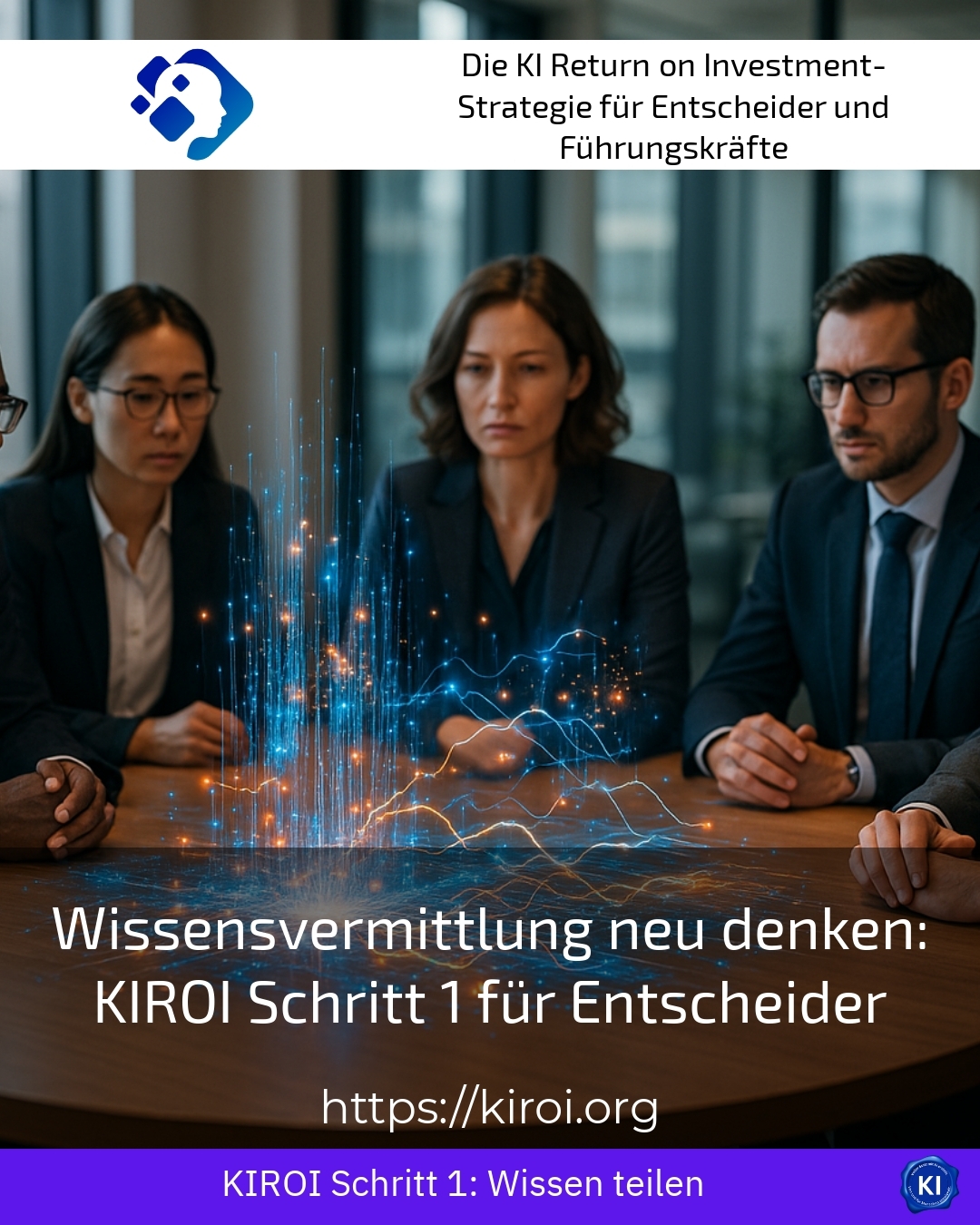At a time when information is flowing faster than ever before, knowledge transfer is taking on a whole new meaning. The classic transfer of facts is no longer sufficient if decision-makers and managers want to successfully support projects. This is where KIROI Step 1 comes in and offers a fresh look at the processes of knowledge transfer. It is about more than just passing on information: knowledge transfer is seen as a strategic tool for developing skills sustainably and shaping dynamics in organisations.
Knowledge transfer as a strategic resource for decision-makers
Practical experience shows time and again that decision-makers often face challenges when it comes to not only imparting knowledge, but also securing it and using it productively. Whether in personnel development, complex digitalisation projects or change management - targeted knowledge transfer enables people to understand interrelationships and take responsibility.
An example from software development illustrates this: agile teams often require rapid knowledge transfer in order to be able to react flexibly to requirements. Here, KIROI Step 1 helps to identify knowledge gaps and design individual learning paths instead of imposing rigid training formats.
Another example from the production industry is lean management initiatives. Well-organised knowledge flows are crucial to making processes more efficient. KIROI helps to make processes transparent and impart knowledge in a targeted manner so that employees can confidently apply practical methods themselves.
Knowledge transfer also plays a central role in the further training of managers. Decision-makers often report that traditional seminars are too theoretical. KIROI Step 1, on the other hand, focuses on actively involving participants, for example through moderated workshops or coaching elements that provide practical impetus and contribute to a better understanding.
Rethinking knowledge transfer: methods and tools of the KIROI approach
KIROI Step 1 is based on a combination of proven and innovative methods of knowledge transfer. The principles are clear: create transparency, recognise individual needs and actively shape the learning process. Techniques such as targeted scaffolding, interactive moderation and the use of digital tools support this process.
A concrete example from management consultancy shows how digital platforms can be used to impart knowledge. Employees can access customised learning content at any time and deepen their knowledge independently. KIROI supports these processes with accompanying coaching sessions to ensure the learning effects.
In the healthcare sector, knowledge transfer is often successful through case studies and simulations that make complex processes understandable. With KIROI Step 1, such learning formats can be planned in a targeted manner and supplemented with reflection phases so that decision-makers can better support the transfer into practice.
A third example, this time from the financial sector, shows how storytelling is used as a method of knowledge transfer. Here, narrative scenarios help to explain complex rules and regulations in a vivid way so that employees can better assess risks and make more informed decisions.
Practical tips for decision-makers to optimise knowledge transfer
Success in knowledge transfer begins with analysing the target group. Decision-makers should know exactly what previous experience, competences and needs the participants have. KIROI recommends conducting targeted surveys or workshops in order to develop customised learning formats.
It is also important to understand knowledge transfer not as a one-off act, but as a continuous process. For example, linking face-to-face events with digital learning modules can promote sustainable learning success.
A third recommendation concerns the active involvement of learners. Practical exercises, scenarios or peer coaching support the independent application and anchoring of knowledge. KIROI Step 1 therefore attaches great importance to seeing learners as active partners in the process.
BEST PRACTICE with one customer (name hidden due to NDA contract) The customer in the industrial manufacturing sector used KIROI Step 1 to support managers in the introduction of new technologies. Through a mixture of workshops, e-learning and individually tailored coaching, knowledge transfer was realised more quickly and resistance was effectively reduced.
Another customer experience from the service sector shows how KIROI Step 1 significantly improved communication between specialists and managers. The targeted adaptation of knowledge transfer to different levels of knowledge led to greater acceptance of new processes.
Knowledge transfer - an ongoing task for forward-looking decision-makers
Knowledge transfer is not a static process. The demands on this form of communication are constantly changing, precisely because markets and technologies are changing rapidly. Decision-makers who use KIROI Step 1 are given impetus to fulfil their role as trailblazers for competent and self-confident action by their teams.
This creates an environment that promotes a culture of learning, creates openness to new content and enables sustainable development. In complex projects in particular, this approach offers the opportunity to strike a better balance between formal training and informal learning.
My analysis
To summarise, it can be said that knowledge transfer in the modern working world must be understood more than ever as a structured and dynamic process. KIROI Step 1 clearly shows how decision-makers can actively shape this process in order to increase both individual learning success and organisational benefits. With practice-orientated methods, close support and the use of digital media, a modern foundation is created for sustainable knowledge and the associated action competence.
Further links from the text above:
Knowledge transfer - QUALITY©
Knowledge transfer techniques - MiniCourseGenerator
Knowledge transfer simply explained - StudySmarter
Knowledge transfer: meaning, methods and practical tips - Azubiyo
Knowledge transfer & teaching methods - Axel Schröder
7 ingenious tricks for effective learning - explainr.de
Knowledge management methods - OMR ContentHub
Knowledge transfer methods - great2know
Knowledge transfer - Hochschuldidaktik.net
Learning methods: Different approaches to knowledge transfer - eEducation.de
For more information and if you have any questions, please contact Contact us or read more blog posts on the topic Artificial intelligence here.















